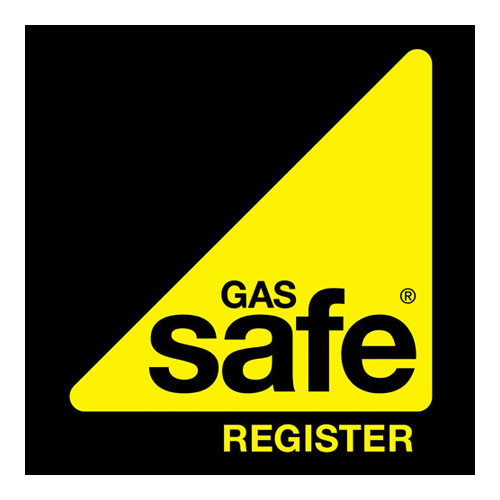Central Heating (More Info)
One of the biggest problems / complaints people have with their radiators is that some just don’t get warm, or are only warm at the top or there seems to be no rhyme nor reason to how the system is warm one minute and cold the next... the good news though is every problem has a reason and ultimately a solution. First it’s best to know what types of Central Heating Systems there are and how they work...
Your Central Heating radiator circuit will be one of two types:
Open-Vented System:
This is the older type system that’s been in use for many years and is still found in many homes.
Basically, the system is heated by a System or Regular Boiler, (see Boiler page) and will have a hot water cylinder somewhere in the property, usually in a cupboard on the landing. The Central Heating circuit is ‘fed’ via a connected tank in the loft that is topped-up as required from the cold main supply via a water float ball-cock valve. The tank is ‘open’ and keeps the radiator circuit filled with water. As water naturally evaporates or when a radiator is drained for any reason, the water in the header tank automatically fills and maintains the water in the system.
Sealed System:
A modern system that you will have if you have a Combi Boiler or an Unvented Hot Water Cylinder with a System / Regular Boiler, (this is not strictly always the case, you can have an Unvented Hot Water Cylinder with an Open-Vented System but it is not common). With this type of system the system is filled and topped-up as required via a ‘filling-loop’.
This can either be and integral part of your boiler or an external one, one end of which will be connected to the cold main water supply and the other end connected to the Central Heating circuit. Two valves, one on each end, are opened to allow cold mains water to flow into the Central Heating circuit. Adjacent to the filling mechanism, either in the Boiler or externally will be a pressure gauge displaying the sealed Central Heating circuit pressure.
Sealed Central Heating circuits should be between 1 & 1.5 Bar pressure WHEN COLD, this is ample pressure and allows for the increase in pressure when the heated water expands.
Central Heating problems:
The single most common problem people have with their radiators is that some radiators are warm at the bottom and cold at the top and/or the highest situated radiators are not getting warm.
Most of the time this is due to air trapped in the radiators as air is lighter than water, it gets trapped at the top. This can be remedied by “bleeding” the radiator, opening the little square screw at the top of the radiator with a radiator key to let the air escape until water starts to bubble out, indicating the air has been removed. You must remember though that if you have a Sealed Central Heating circuit you will need to re-pressurise / re-introduce water into the circuit via the filling mechanism to maintain the required pressure level, (letting air out of a radiator will cause the pressure to drop). REMEMBER: If topping up your sealed Central Heating circuit via a filling loop/mechanism, only pressurise it 1 - 1. 5 Bar maximum when cold. If you have an open-vented system, the water will be “topped-up” automatically via the header tank.
Another common fault with radiator circuits is that they are not properly ‘balanced’. Water will always follow the path of least frictional resistance and if you have every valve on every radiator fully open, (as most people seem to do), the water will by-pass or at best flow very weakly to the radiator(s) that are either at the end of the circuit or a long run of pipe...which is why people often complain of one or two radiators that never seem to warm up properly. This issue, providing there are no other problems with restricted/blocked valves or pipework/radiators full of sludge, can be improved vastly by balancing the system.
Briefly, balancing the system is achieved by using the lock-shield valve on each radiator, (that’s the one you don’t use to turn them up and down) to ‘restrict’ the flow by turning them down on the radiators that get hot first when the system is turned on. This is done in sequence starting from the first radiator to get hot through to the final, coldest one. Doing this in graduations to all the radiators literally forces the water to flow to all radiators at equal flow rate and volume so they all warm up together. This is something that can be easily done by the homeowner armed with a spanner and some patience... feel free to Contact Us for further advice.
In extreme cases, especially with Open-Vented systems, some Central Heating circuits and radiators can, over time, get filled with a thick black substance, known as ‘magnetite sludge”.This is a thick black sludge comprised from rusted and dissolved metals from the pipework and radiators in the system.
It forms when air and heated water react with the ferrous metals in the system and rust is formed.
Open-Vented systems are much more susceptible to it as the system is frequently topped-up with fresh oxygenated water, increasing the rate of internal corrosion.
Sealed Systems are less susceptible as barring leaks and faults, they are water tight and once the water in the system has been heated and circulated several times and the oxygen level depleted, the chemical reaction that causes rust no longer occurs. Almost all new Gas Boilers now come with a magnetic filter unit, (often referred to as a ‘Magnaclean Unit”) that is installed on the Central Heating return pipe just before it enters the Boiler which ‘traps’ and catches the magnetic sludge as it flows in suspended particles in the water, preventing it from both damaging and blocking the Boiler’s heat exchanger and preventing it from settling in the pipework and radiators. A magnetic system filter can be fitted to any system at any time and we highly recommended it if one is not currently installed.
There are many symptoms of a system suffering with ‘sludge’ deposits, it invariably settles at the bottom of radiators, resulting in radiators that are warm at the top but cold at the bottom as the water ‘flows’ over the settled sludge deposits and in severe cases no flow at all as pipework is blocked. It is also very detrimental and damaging to the Boiler as it restricts the flow through the Boiler’s heat exchanger resulting in, at best, restricted flow and poor performance and at worse heat exchanger blockage, causing ‘kettling’ noises from the Boiler and frequent Boiler ‘lock-outs’ due to too high water temperature which will lead ultimately to Boiler breakdown.
The good news though is that in a lot of cases the magnetic sludge can be removed from a system, a magnetic filter subsequently fitted and the system remedied back to working order. CPHG Services utilises several methods to achieve this, either through a system ‘power-flush” which involves temporarily installing a high velocity reversible pump into the system and ‘flushing’ the system free of the magnetite sludge or by temporarily installing two large powerful magnetic filter cartridges into the Central Heating circuit, introducing chemical cleansers to dislodge and ‘free-up’ the sludge which is then ‘trapped’ and captured by the magnetic cartridges and safely removed from the system and disposed of.
CPHG Services utilises and uses a state of the art thermal imaging camera during the cleaning /rinsing process which enables us to actually ‘see’ where the sludge is in the system and by agitating the radiators with a soft drill we can monitor and see the sludge being dislodged and removed from the radiator.
Some of our thermal images taken of Radiators during a system magnetic rinse process.
The left hand / top picture of each Radiator clearly shows the ‘hot’ sections of the Radiators and the cooler sections caused by magnetite sludge deposits restricting water flow. The images on the right show the improved flow of hot water and the even heat distribution as the magnetite sludge is dislodged, suspended in the water and ‘trapped’ in the magnetic cartridges for disposal. The result is a system free of sludge deposits and one that now warms up fully everywhere with no cold spots. Contact us for further advice and a free survey.
Underfloor Wet Heating Circuits:
Often the first choice for architects and designers of new homes, Underfloor Heating has many advantages over traditional Radiator systems…..
- Warm floors = toasty warm feet all year round..who wouldn’t want that..
- Even & consistent heat distribution throughout the whole room..
- A suitably sized circuit can heat a much larger area than a Radiator and the system works at a lower temperature, so it can reduce heating bills..
- The system is ‘hidden’, so no bulky Radiators taking up valuable wall space..
- Can be a ‘whole house’ system or just added as an individual room circuit for extensions or renovations & can be added to compliment an existing Radiator Central Heating Circuit if desired.
- Any type of Boiler can be used, so long as it has sufficient Kw heating capacity.
- The system uses continuous plastic pipes with no joints, so no chance of leaks
There are however, some disadvantages too:
- It is more expensive than traditional Radiator systems to install, both in whole house circuits and additional complimentary systems..
- It requires quite a bit of upheaval to retro-fit in existing properties..
There’s no getting away from the fact though that a properly designed, configured and installed Underfloor Heating Circuit is the best available heating system for domestic properties.
CPHG Services can fully advise you on the whole process and are happy to provide detailed free of charge quotations for entire property Underfloor Heating Circuits or add-on circuits for your new room extension or renovation plans….. Contact Us for further details.

















